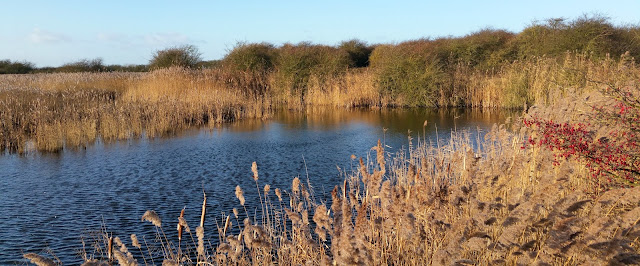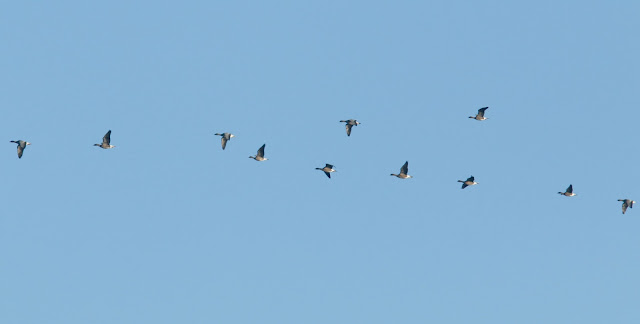After arriving at the Skitter,i got the kit together and got well and truly wrapped up as it was pretty nippy to say the least and headed along the flood bank.Two Little Egret in the Haven,where the first notables to be seen,no doubt sheltering from the blustery south westerly wind.
As i carried on my walk,the distant sound of Pink-footed Geese and a few birds landing a couple of fields away,were the birds i had hoped to be present.It wasn't long before i was watching them spread across a flooded,harvested sugar beet field.A quick guesstimate saw me coming to the conclusion that there was about 4500 birds present,but i couldn't achieve an accurate count due to not all the birds being visible unfortunately,but what a cracking spectacle.
Several scans of the flock revealed no other species until a flock of 5 Tundra Bean Geese flew into view and then spent about five minutes circling around before landing well out of view,buggar.I managed a few crap record shots,but at least i had seen them well in the scope.These are the first Bean Geese i have definitely seen in the area after seeing some possibles many moons ago in my birding youth.
The Pink flock then flushed and this was the theme for the remainder of my visit sadly,but what a great sight and sound when they all took off!.
As i approached Dawson City,a flurry of sightings saw another view of the Tundra Bean flock,before they again landed out of view and then a lovely Common Buzzard flew along the bank side and when i arrived at the reserve itself,a cracking adult male Marsh Harrier was seen a couple of times as it hunted the surrounding area.
A scan from the foreshore in front of Dawson,saw a few nice waders on view which included a flock of 16 gorgeous Grey Plover as they hunkered down out of the wind and 5 Bar-tailed Godwit probed the estuary mud for Ragworms.
I began my walk back towards East Halton Skitter and as i approached the small wood which runs at 45 degrees from the bank side inland,the distinctive call of a Firecrest filled my ears and there it was below me.It flitted along the line of Hawthorn bushes and i managed to fire off some shots before it disappeared into the wood.The only other species i saw it with was a single Goldcrest.What a lovely surprise and to put it into context,this is the first Firecrest i have seen on the old patch,a little beauty and a very nice belated Christmas present.
I carried on back towards the car on a high after finding the little crest and travelled home contented at another great visit to my old stomping ground.
 |
| Pink-footed Geese. |
 |
| Pink-footed Geese. |
 |
| Tundra Bean Geese. |
 |
| Tundra Bean Geese. |
 |
| Dawson City LWTR. |
 |
| Dawson City LWTR. |
 |
| Dawson City LWTR. |
 |
| Male Firecrest. |
 |
| Male Firecrest. |
 |
| Male Firecrest. |
 |
| Male Firecrest. |
 |
| The Humber Floodbank,Near East Halton Skitter. |
 |
| Pink-footed Geese Heading west At East Halton Skitter. |







































